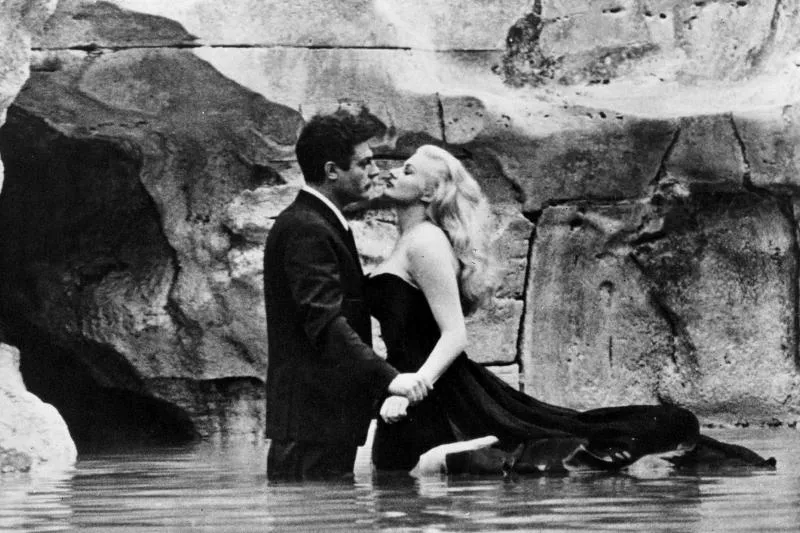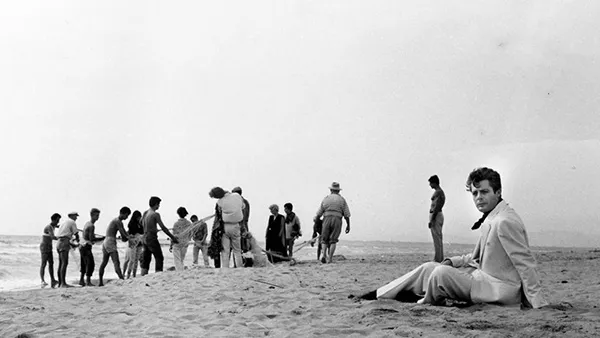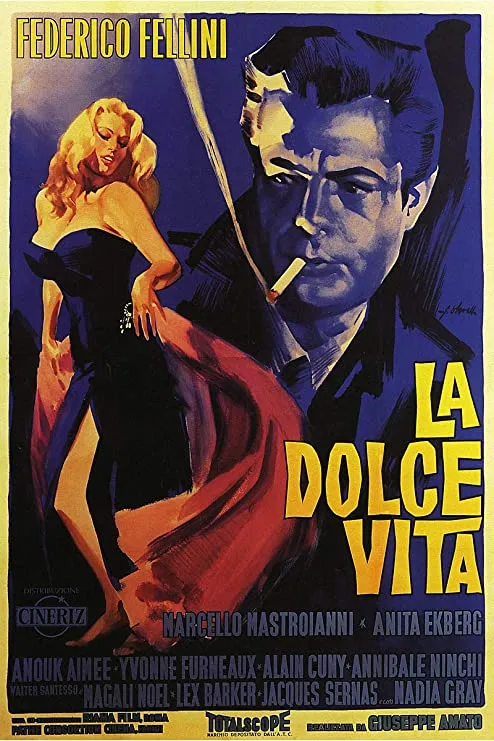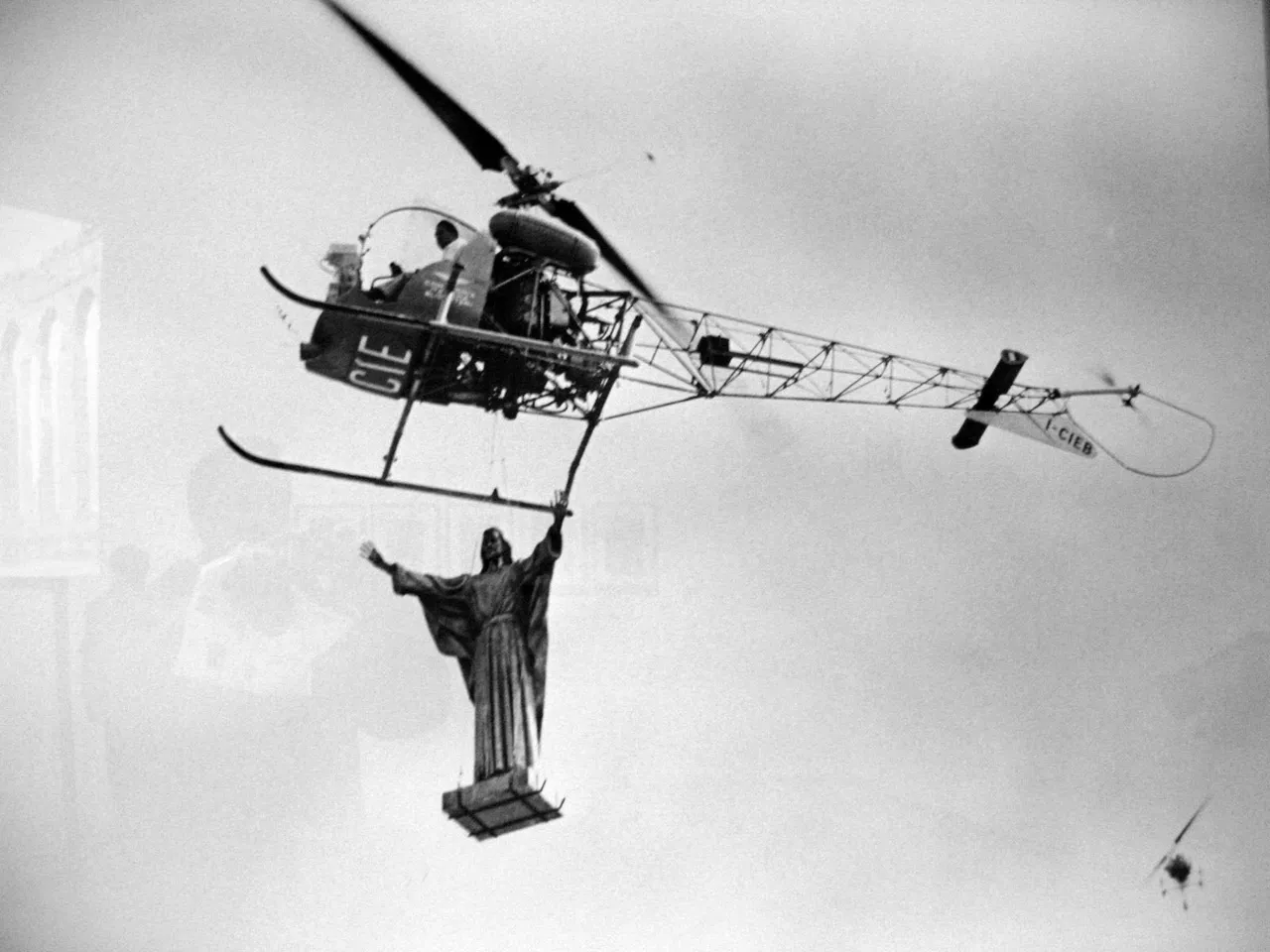Nonetheless, I want to understand it well enough to convey my thoughts to the next possible viewer.
On the plot of the Cinema
It's hard to say whether La Dolce Vita has any plot at all and it would be utterly wrong to assume that it does not. Let us consider a perspective. Perhaps Fellini wanted to portray the age old quest to find inner peace, stability and complacency. The characters in it represent different social classes and he sought the essence of happiness in them. The protagonist 'Marcello' (played by Marcello Mastroianni) and his journey acted as an anchor only. The journey itself is a personification of the director's own bewilderment.
This is nothing new though. We have seen such portrayal in his 'City of Women'—where the protagonist (also played by Mastroianni) only appears as a plot device and through him Fellini wanted to express ideologies, societies and the absurd relationship that hovers over them.
...However, let us consider another perspective...
And to do that, let's not discard Marcello just yet. Let's just say the story is about him. La Dolce Vita is a documentation of his life—its ups and downs, ebb and flow.
Contemporary Italian culture finds itself blended in the cinema with these two perspectives like how a piano would compliment a beautiful piece of violin orchestra.
How Fellini gave it all a shape
Federico Fellini is a master storyteller and a giant of Italian Cinema. La Dolce Vita advanced through many small sub-stories. At a glance, all of them seem random. But if we look closely, we're bound to find some threads that connect them. In the beginning, Marcello strikes us as a commitment-phobic Womanizer. We later discover he has a fiance and she is possessive like a territorial beast. Did she drive Mercello away?
It's true that most viewers will call Marcello a playboy and they're not far off the mark, albeit he's not merely that. At least that's not how Fellini wanted to portray the character, nor the cinema is of that sort.
Marcello is a playboy to some extent and he does chase beautiful women one after another like a horny little toad. When he sets his eyes on someone, he wants to get a hold of her, to have her all to himself. Whether she is a big movie star, a noble woman fallen from grace or a fellow sightseer-it matters not to Marcello. He wants to worship beauty wherever he catches a glimpse of it.
We should take a step back and reconsider the opening scene. A big helicopter flies with a huge statue of Jesus Christ. Marcello is supposed to cover the story as a journalist. However, he doesn't seek solace within religions, nor is he perturbed with the teachings in them. A famous american star, Silvia, arrives in Italy. With her flawless beauty and glamour, comes paparazzi and fanatics. Marcello finds himself among them for a while.

Photo Source
With love for beauty in heart, Fellini then turns to art and artists. Marcello's friend Steiner and the little gathering of intellectuals in his house perhaps represent just that. Marcello hears them debating on art and whatnot, finds himself much impressed. So has he found his place? Does he also belong to them? He asks his friend Steiner if he can come hang out with them. But his fantasized nirvana dosen't last long.
He finds himself among media workers. Perhaps, parties and drinks and waking up with massive hangovers are all there is to life. But all of that in vain. With a new morning, the angel of death comes knocking. The cycle of life invokes another iteration, as it always does and always will.

Photo Source
Who's to say Marcello didn't find happiness along the way? Possibly, he didn't recognize it then. Perhaps—so long in the run, he forgot to stop. In his maturity, his eyes lost the ability to see how freshness of youth brings forth mirth and complacency.
In La Dolce Vita, everyone runs after something or someone, everyone wants to reach somewhere. The film is the embodiment of all our wish, desperation and unfulfillment. Everyone is seeking that beautiful life, that happy life.
The name of the film suddenly starts to show it's true significance.
La Dolce Vita. The Good/Sweet Life.
One of my top 10 films of all time. A pinnacle of film-making. This is one of the films you truly want to see before you die.
Thanks for stopping by. :)

About Me


Twitter - https://twitter.com/not_a_c1nephile
Youtube - https://www.youtube.com/channel/UCg3TwYk--HKIsRmnvhob1Mg

